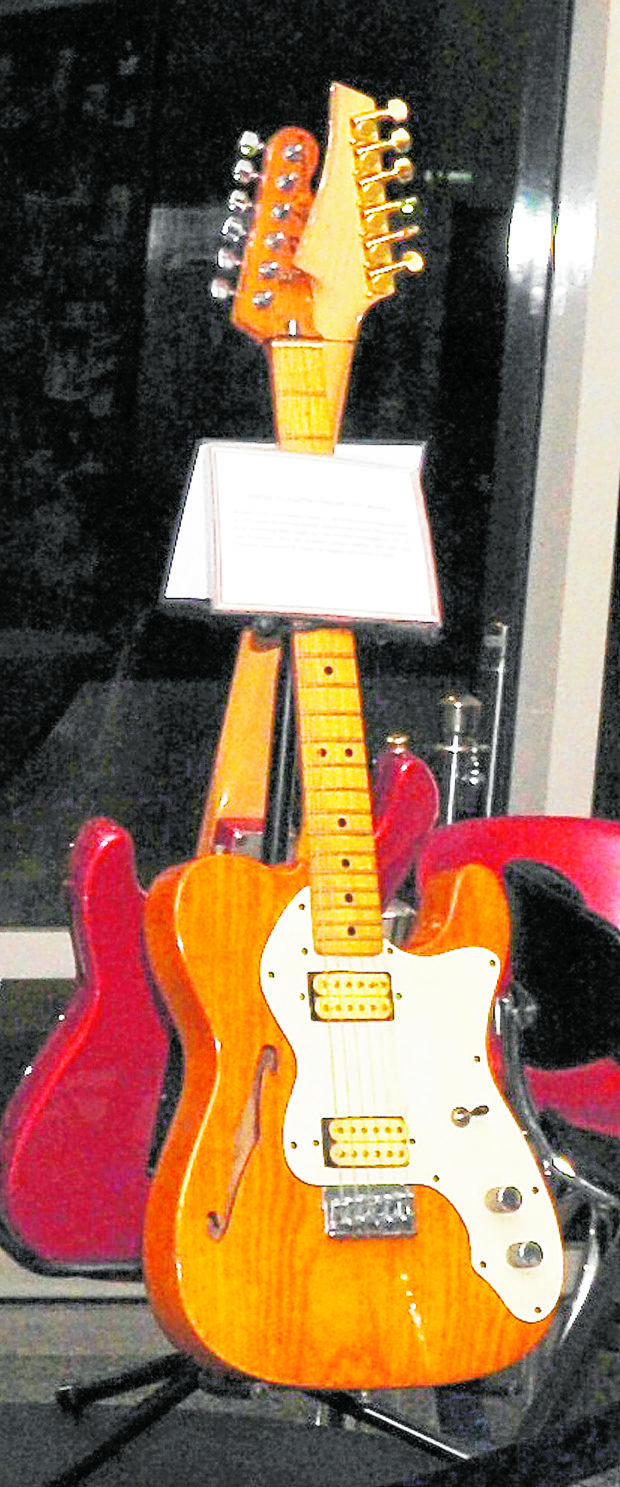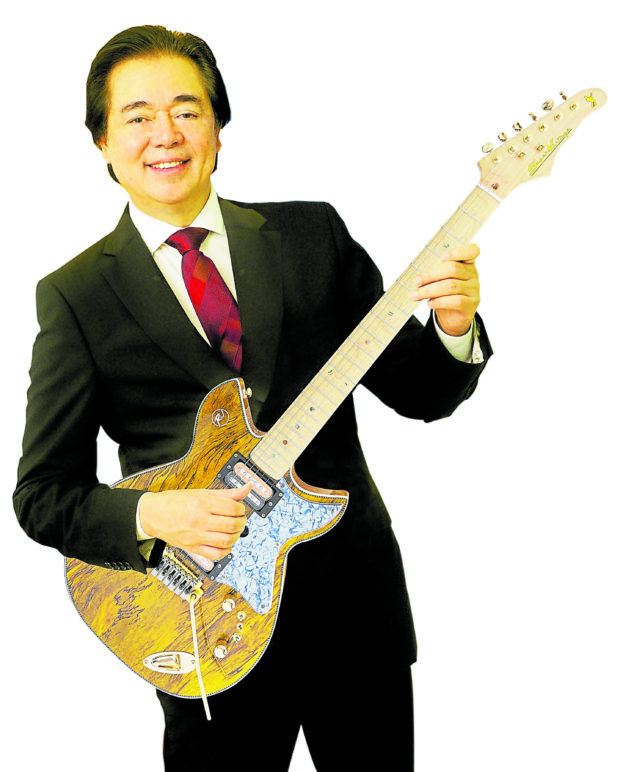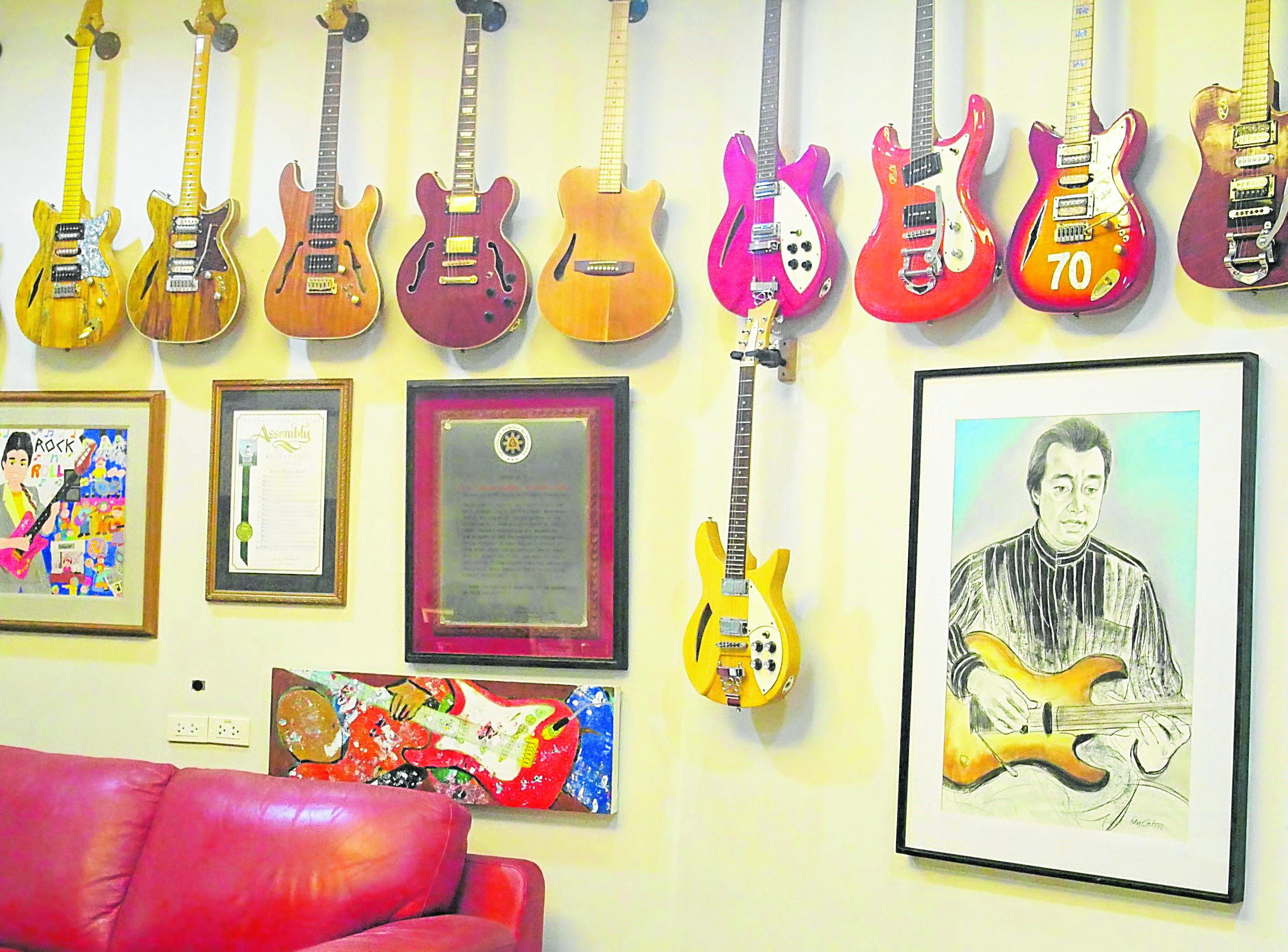
Toting his Gibson Jubilee acoustic guitar, Ramon “RJ” Jacinto, musician and then vice president of the family-owned Iligan Integrated Steel Mills, went to Rome to celebrate his father’s birthday on Sept. 7, 1972. What was meant to be a two-week holiday ended up as 14-and-a-half-years of exile.
En route to Manila, Jacinto was in transit in Tokyo when he learned that martial law had been declared on Sept. 21.
Ferdinand Marcos launched a major crackdown on his critics and oligarchs who refused to kowtow to him. While the patriarch Fernando, who owned Jacinto Steel and Iligan Steel Mills, was abroad, the government sequestered the family’s properties and jailed its executives without any formal charges. Meanwhile, Jacinto’s aunt kept the musician’s guitars, including the Gretsch Chet Atkins, his first American-made model.
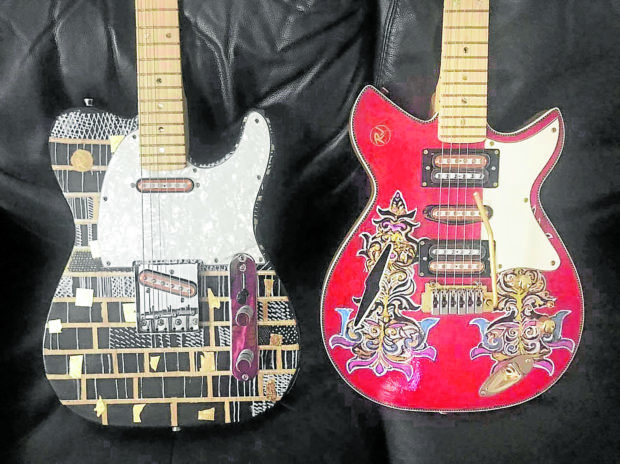
In his hotel room, he found solace in music playing. “When the world caved in on me, I had the guitar as my companion,” says Jacinto. He returned to Rome, then moved to New York after a year. He spent the rest of his exile in Hawaii.
When Jacinto returned after the Edsa Revolution, he regained the family assets, except for Iligan Steel Mills, which was absorbed by the government in 1974 and was renamed National Steel Corp. He rebooted the steel and media businesses and started other ventures. Today, his businesses encompass Bistro RJ lounge, RJTV, Rajah Broadcasting Network, the digital channels, the RJ Guitar Centers and his guitar factory, and Jacinto Steel.
Jacinto has accumulated over a hundred guitars since the 1960s. Yet, he doesn’t consider himself a conscious collector.
“There are some who don’t play or know very little about playing, but they go to vintage guitar shows in the States to collect. I only acquire a guitar if there is a memory that comes with it,” he says.

Playing in exile
He values the first guitar customized for him by luthier Rudy Disipulo and a rare Mos Rite, given in 1964 and autographed by Robert Bogle, founder of The Ventures. “I’m a collector in the sense that if I like the model and the sound of the guitar, I would keep it.”
The most special guitars mark his trip down memory lane. In his senior high school year at the Ateneo, he formed a band, RJ and the Riots, that made its debut concert at the school’s covered courts in 1960. He and another member played a Japanese Teisco guitar, while another player used a one-string base made from a kerosene drum.
A few months later, on a trip to Boston, the then 15-year-old Jacinto was drawn to an orange guitar displayed in a store. His mother bought him the Gretsch 6210, designed by American musician Chet Atkins. He wrote his first hit and release, “Weightless,” with this guitar. This guitar instrumental solo showed off his plucking chops.
His favorite is the Fender Jazzmaster 1962 model, yet another guitar that was recovered after martial law. “There’s nothing like it. The sound is beautiful, sweet and young,” he says. He explains the types of guitars: The acoustic can produce sounds without amplification; the electric guitar uses a pickup, a gadget that turns the guitar strings’ vibrations into electrical signals which are transmitted to an amplifier to boost the volume.
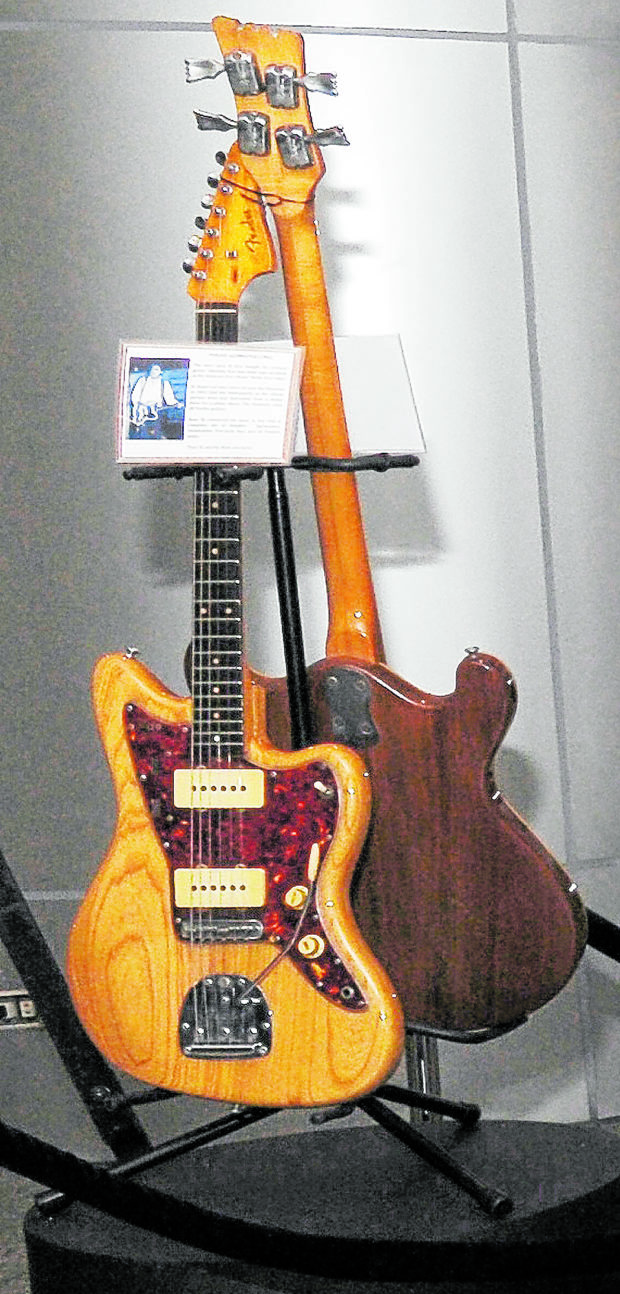
“The Fender guitars were the first handy guitars for the rock ’n’ rollers,” says Jacinto. During his exile, he acquired the Fender Telecaster Thinline in 1974 which boasts of a special amplifier, the Fender Deluxe Reverb. “The sound is warmer,” says Jacinto.
He wrote such hit songs as “Muli” and “Sugat ng Puso” with this guitar. The 45 revolutions per minute vinyl of “Muli” was sent to Manila. The radio stations couldn’t name the singer-composer, since the Jacintos were anti-Marcos.
In 1988, Jacinto bought a small shop owned by Disipulo, the go-to guy for guitar repair and custom-made quality guitars. “He understood tone and pickup,” he says.
With Disipulo’s know-how, Jacinto started a guitar manufacturing factory in Mandaluyong. His philosophy was that since the Filipinos learned guitar making from the Spaniards, and Cebu has been famous for handcrafted guitars, the Philippines should be producing world-class guitars.
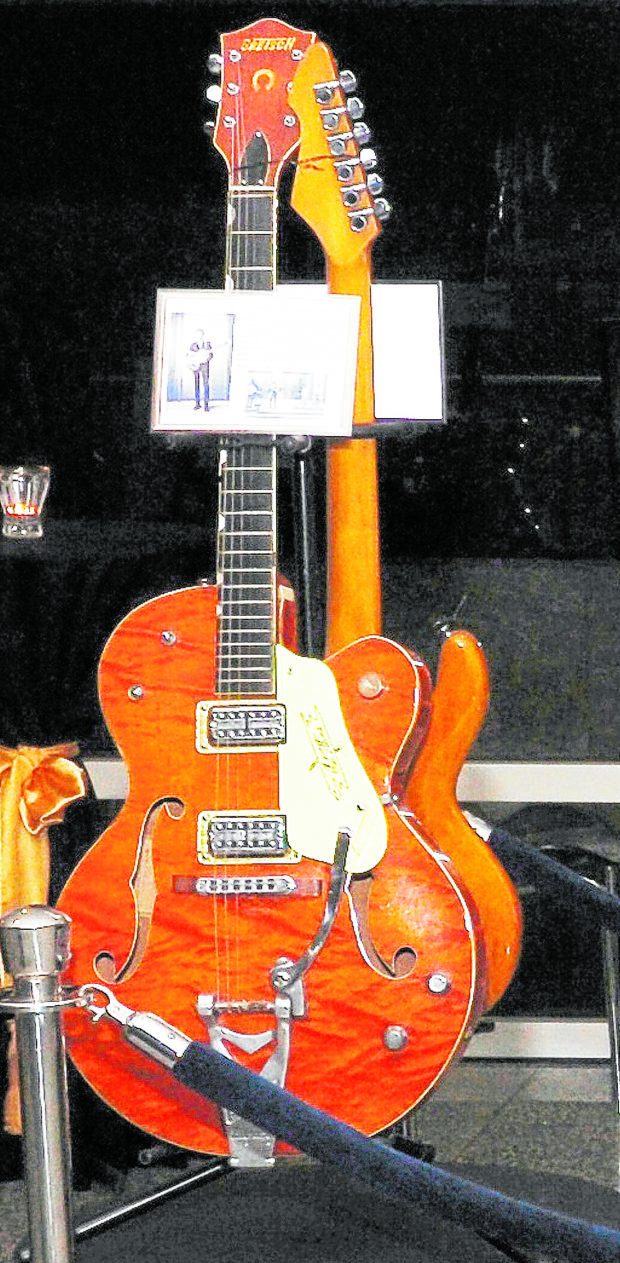
Five-in-one guitar
In the early ’90s, Jacinto forged a partnership with Schecter Guitar Company to create quality electric guitars. His first prototype, resulting from the partnership, was the five-in-one guitar.
“It was designed to fit my needs. When I started Bistro RJ in 1986, I would have to change guitars in a set. If I sang the Beatles, I needed a Gibson. If I sang the Beach Boys, I needed a Fender. When I stopped playing, people would stop dancing and there would be a pause on the dance floor. I couldn’t afford to be changing guitars all the time,” he explains.
He envisioned a guitar that had the crisp and bright sound of the Fender, the mellow sound of the Gibson and the best qualities of other guitars. He then opened up the best electric guitar models and studied their pickups, magnets and circuit. After two years of designing, experimenting and refining, Jacinto finally came up with the Raj 1. With a flick of a switch, the guitar produced the desired effect and better sound quality.
In 2014, he launched the enhanced five-in-one version for retail, the Supervintage, which boasts of a body made from Philippine mango wood and a Canadian maple wood neck. It was presented at the National Association of Music Merchants Show in Anaheim, California, in 2016. The Supervintage is a testament to Filipino craftsmanship.
Today, the guitar factory is located in the free trade zone in Cavite. His Japanese partners operate the business, while he remains a shareholder. The factory produces the Supervintage and other branded guitars for the most discriminating market, Japan and other countries.

Best pal
Jacinto is modest about his collection. “They are not expensive, but I have some good ones. The bulk of my guitars comes from experimentation and phased-out models. I didn’t want to get rid of them. I hung 35 in the family room and 85 in the home theater,” he says.
The collection is maintained monthly by a specialist from the guitar factory. “He cleans them, changes the strings and straightens the neck. The tone tends to be off when there’s a change of temperature. That’s why guitarists tune their guitars when they go to a room with a different temperature. It may not be noticeable but if you have a sharp ear, you would keep tuning because the wood is alive,” he says.
Music has been Jacinto’s breath of life, and his guitars are like his limbs. “I like to be surrounded by them because they are a part of me.”
Jacinto quotes American jazz guitarist Les Paul as saying, “The guitar is such a pal. It’s a psychiatrist. It’s a doggone bartender. It’s a housewife. Whenever I’ve got a problem, I pick up my guitar and play.” —CONTRIBUTED
